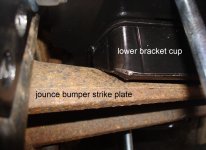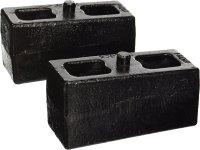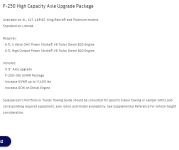Thank you - after reviewing the instruction per my request I noticed a part of the vehicle that I did not see previously - the jounce bumper strike plate. I now see how the lower bracket cup rests on that part and supports the air bag above.
View attachment 797695
I still disagree with your design of your axle spacer block. Your design appears to be flawed since it is missing vertical surfaces on the front and rear to support the loads being transferred while the axle rotates under acceleration and braking. These vertical surfaces should be aligned with the vertical surfaces above and below. You design also fails to rotate the axle and properly align the rear drive shaft, more specifically, the rotational planes of the two u-joints. Here is an example of a proper axle spacer block - it is cast, has all four vertical surfaces for load transfer, and even has a slight angle built into it for addressing potential driveline issues.
View attachment 797696
One more note from the instruction manual your provided that may be of interest to you and others:
View attachment 797698







